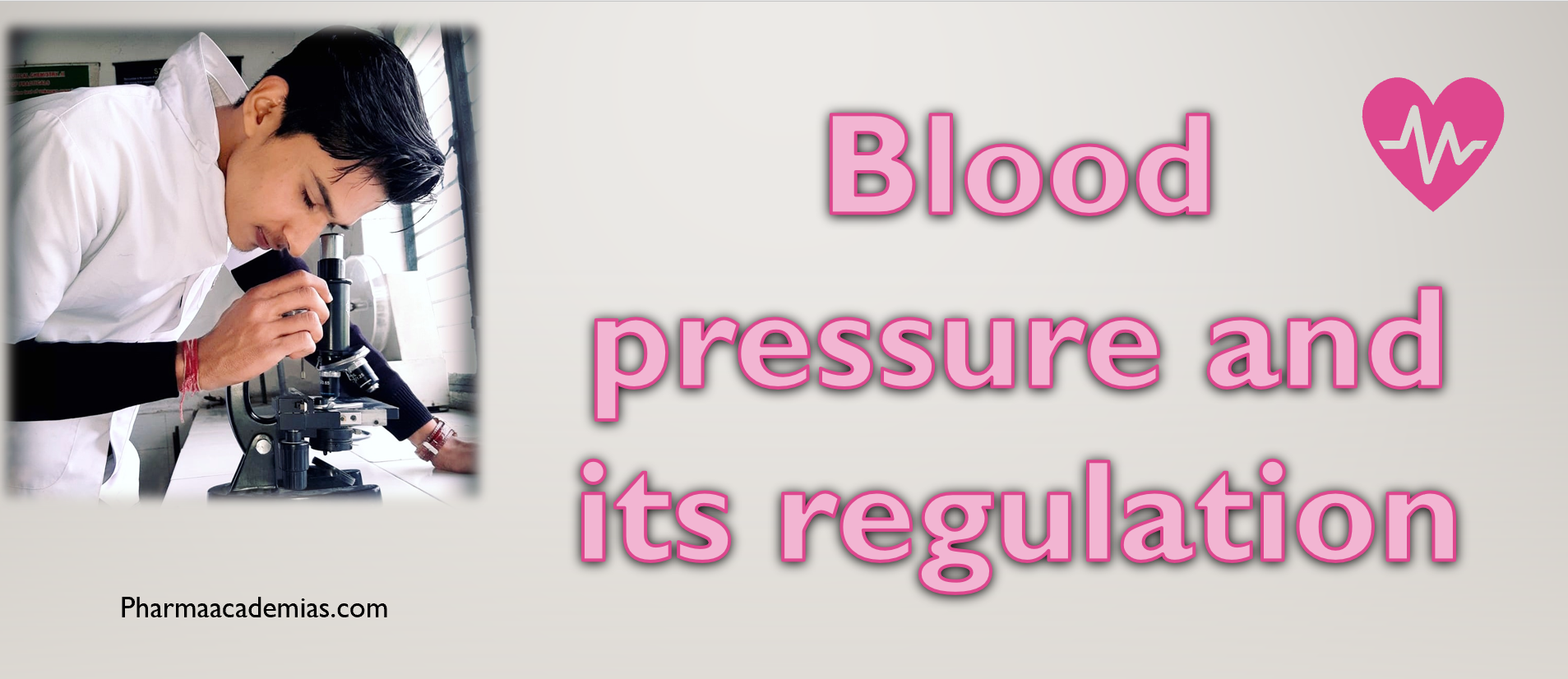Blood pressure refers to the force of blood exerted on the walls of the arteries as the heart pumps blood throughout the circulatory system. It is a crucial physiological parameter that, when regulated properly, ensures the delivery of oxygen and nutrients to body tissues. In this detailed note, we will explore blood pressure and the mechanisms involved in its regulation.

1. Blood Pressure Measurement:
Blood pressure is typically measured in millimeters of mercury (mmHg) and is expressed as a ratio of systolic pressure to diastolic pressure. For instance, a normal blood pressure reading is often considered as 120/80 mmHg. The two components of blood pressure are as follows:
- Systolic Pressure (the top number): This represents the pressure in the arteries when the heart contracts during systole, pushing blood into the arteries. It is the higher of the two numbers and reflects the maximum pressure in the arterial system.
- Diastolic Pressure (the bottom number): This indicates the pressure in the arteries when the heart is at rest during diastole, between heartbeats. It is the lower number and represents the minimum pressure in the arterial system.
2. Blood Pressure Regulation:
Blood pressure is tightly regulated by a complex interplay of several physiological mechanisms, primarily involving the nervous system, hormones, and local factors. These mechanisms work together to maintain blood pressure within a narrow range, ensuring adequate blood flow to body tissues and organs.
a. Autonomic Nervous System (ANS):
The autonomic nervous system, specifically the sympathetic and parasympathetic branches, plays a significant role in blood pressure regulation.
- Sympathetic Nervous System: Activation of the sympathetic nervous system leads to increased heart rate, stronger heart contractions, and vasoconstriction (narrowing of blood vessels). These responses raise blood pressure, particularly in situations requiring a “fight or flight” response.
- Parasympathetic Nervous System: The parasympathetic system opposes sympathetic effects. It lowers heart rate and causes vasodilation (widening of blood vessels), contributing to a decrease in blood pressure.
b. Renin-Angiotensin-Aldosterone System (RAAS):
The Renin-Angiotensin-Aldosterone System (RAAS) regulates blood pressure and fluid balance. When blood pressure or volume is low, the kidneys release renin, which triggers the production of angiotensin II. Angiotensin II raises blood pressure through vasoconstriction, increased heart rate, and the release of aldosterone. Aldosterone, produced by the adrenal glands, enhances sodium and water reabsorption by the kidneys, boosting blood volume and pressure.
c. Local Factors:
Within individual tissues and organs, local factors can affect blood pressure through autoregulation mechanisms. For instance, if a tissue experiences low oxygen levels (hypoxia), it can trigger vasodilation to increase blood flow and oxygen delivery to that area.
d. Baroreceptor Reflex:
Baroreceptors are pressure-sensitive receptors found in the aortic arch and carotid sinuses. They monitor blood pressure and send signals to the brain, which responds by adjusting heart rate and vascular resistance to maintain blood pressure within a normal range.
3. Blood Pressure Disorders:
Disruptions in blood pressure regulation can lead to various medical conditions, including:
- Hypertension (High Blood Pressure): Prolonged high blood pressure can strain the heart, damage blood vessels, and increase the risk of heart disease, stroke, and kidney problems.
- Hypotension (Low Blood Pressure): Low blood pressure can lead to dizziness, fainting, and reduced blood flow to vital organs.
Understanding blood pressure and its regulation is crucial for preventing and managing these conditions. Healthcare professionals often prescribe lifestyle modifications, medications, or other interventions to maintain blood pressure within a healthy range and reduce the risk of associated health problems.

